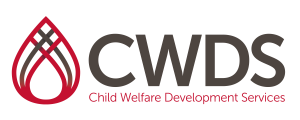CWDS Curriculum
Advanced Assessment and Intervention with Anxiety Disorders
Intended Audience: New and experienced lineworkers and supervisors
Intended Objectives:
- Identify the prevalence and etiology of anxiety disorders in children
- Identify cultural differences that may impact symptoms of anxiety presented in children
- Identify three major anxiety disorders that occur in children
- Identify what they should request from a child’s treating therapists so that they are better able to provide appropriate case management
- Identify a minimum of two different types of potential types of treatments for anxiety disorders.
- Identify what interactions with CSW, foster parents, and natural parents may complicate anxiety disorders in children
Topics Include:
- Prevalence and etiology of anxiety disorders in children
- Symptomatology of major anxiety disorders and differentiation
- Anxiety in children’s impact on education, social relationships, caregivers and physical health
- Role of the child welfare worker in ameliorating anxiety in children
- Assessing when children no longer need treatment for anxiety
- Assessing for referral to a psychiatrist for medication
CalSWEC Competencies Addressed:
1.1 Student demonstrates respect, fairness, and cultural competence in assessing, working with, and making service decisions regarding clients of diverse backgrounds.
1.6 Student understands the influence and value of traditional, culturally based childrearing practices and uses this knowledge in working with families.
2.2 Student is able to critically evaluate the relevance of commonly utilized assessment criteria and intervention models in terms of their usefulness with diverse ethnic and cultural populations.
2.5 Student demonstrates the ability to collaborate with individuals, groups, community-based organizations and government agencies to advocate for equitable access to culturally competent resources and services.
3.5 Student demonstrates an understanding of basic child development and how developmental level affects a child’s perception of events, coping strategies, and physical and psychological responses to stress and trauma.
3.10 Student understands how attachment, separation, and placement affect a child and family and how these experiences may influence a child’s physical, cognitive, social and emotional development.
3.11 Student recognizes the importance of working with biological families, foster families, and kin networks, as well as involving them in assessment and planning.
4.2 Student demonstrates the ability and knowledge both to utilize pre-placement preventive services, and to construct a supportive system for clients that may include collaboration with multiple agencies and disciplines.
4.3 Student works collaboratively with biological families, foster families, and kin networks, involving them in assessment and planning and helping them access services and develop coping strategies.
4.4 Student demonstrates the ability to identify service/treatment plan requirements and to construct measurable objectives for the service plan.
5.3 Student demonstrates understanding of the potential effects of poverty, bias, inequity, and other forms of oppression on human behavior and social systems.
6.1 Student demonstrates the ability to assess the effects of family transitions and the potential impact of becoming a client of the child welfare system.
7.6 Student is aware of potential work-related stress factors and is able to develop and advocate for self-care and other strategies to reduce their effects.
7.8 Student understands the purpose of outcome measurement and is able to seek client, organization, and community feedback for purposes of monitoring practice, service refinement, and outcome evaluation.
Posted In:Interventions, Services & Resources
Mental Health & Behavioral Health



